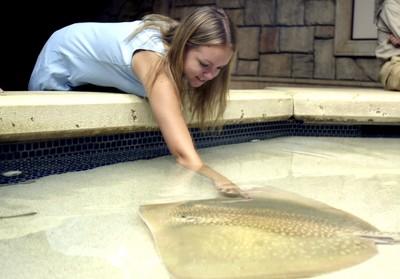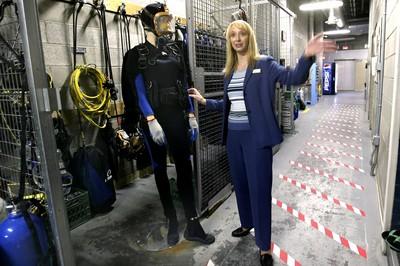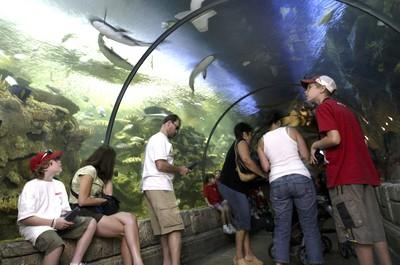Under the Sea



You’ve heard this one before: “Why won’t sharks attack lawyers? Professional courtesy.”
But at Shark Reef Aquarium, even if an attorney fell into the big shark tank it’s still not likely he would be eaten.
That’s not because the fish with the sharp teeth and cranky disposition are too tame to grab a juicy, floating meal, or showing professional courtesy, but because they’re so well-fed they just aren’t interested in humans, says Adrienne Rowland, deputy director of Shark Reef Aquarium at Mandalay Bay.
They don’t even bother the other fish swimming around with them, she says. “They’re well-fed, but that means only three times a week. They’re very closely monitored.”
Sharks are a necessary part of life in the deep since they eat the sick and injured fish in the ocean. And “the fish population is very healthy here, so they don’t eat the fish,” Rowland says.
Shark Reef Aquarium can back up its claims. It was accredited this year by the American Zoo and Aquarium Association. Accreditation means “official recognition and approval of a zoo or aquarium by a group of experts,” according to the group. The organization has 12 experts on its accreditation commission to look at a facility’s “animal management and care, including living environments, social groupings, health and nutrition,” as well as its “veterinary program, involvement in conservation and research, education programs, safety policies and procedures, security, physical facilities, guest services and the quality of the institution’s staff.”
A team of inspectors visits the zoo or aquarium for several days “looking at every area, interviewing staff, checking records and examining the physical facilities. The inspectors then write a detailed report about everything they saw and evaluated.”
Shark Reef is accredited for the next five years, then will undergo the same inspection process in order to retain its accreditation.
The aquarium added several blacktip reef sharks, each less than 12 inches long and weighing less than a pound, born in April at the facility. They went on display in June.
Also on display are two crocodiles (in separate tanks), fish from Lake Tanganyika, an Asian water monitor lizard, Asian freshwater fish, freshwater stingrays, five species of piranha, Caribbean reef fish, a touch pool with stingrays (minus their barbs) and small bamboo sharks and jellyfish.
But the big part of the exhibit is the large, simulated shipwreck tank complete with sawfish, sand tiger sharks, sandbar sharks, stingrays, whitetip reef sharks, a nurse shark and green sea turtles.
Audio guides in English, Spanish and Japanese are available for a more in-depth look at the various exhibits. A version for children is scheduled to be unveiled in the fall.
For an extra $8 per ticket, visitors 13 and older can get a guided behind-the-scenes tour of Shark Reef including the feeding stations above the Shipwreck tank, divers gear, food preparation and the three filtration systems to clean the aquarium’s 1.6 million gallons of water.












